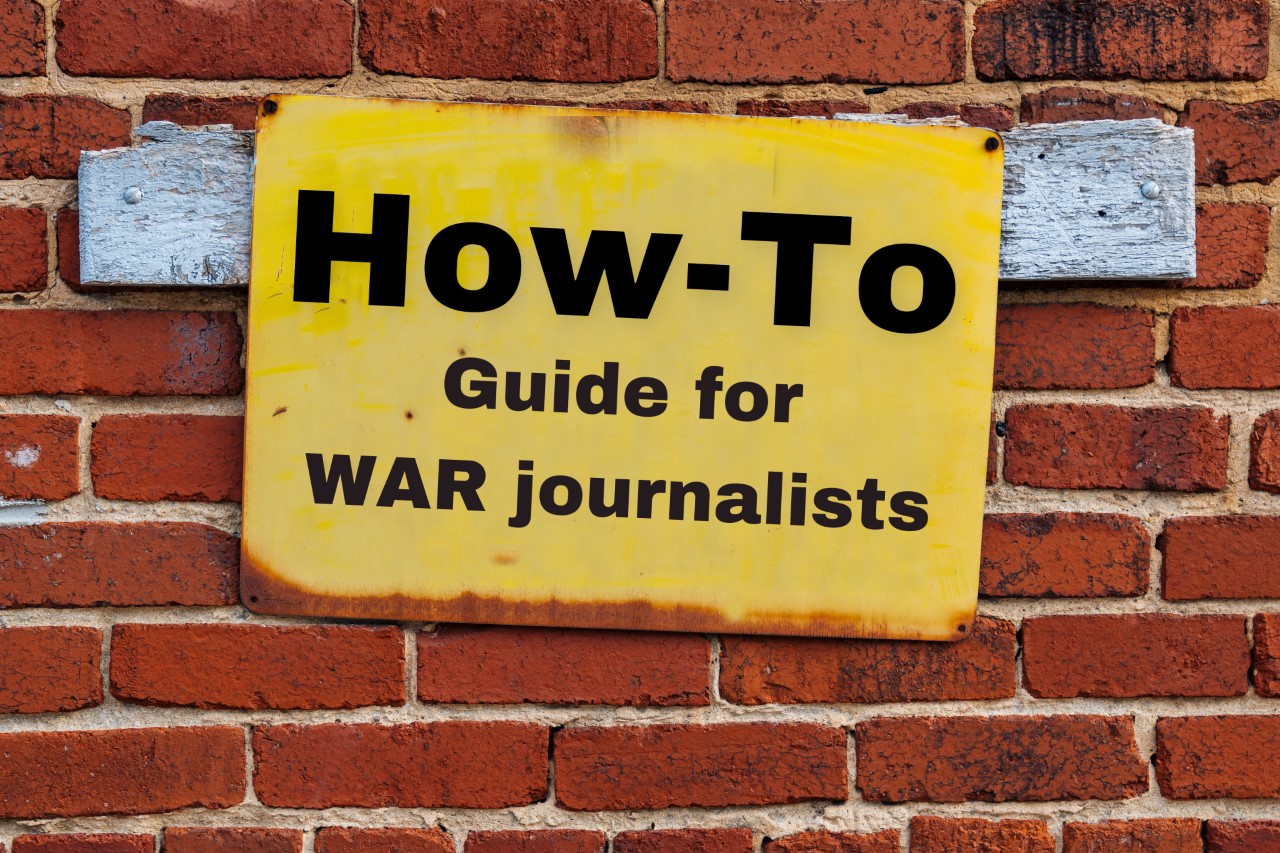by Avetis Harutyunyan
What does a journalist commissioned to go to a war zone need to know?
This is the first question that pops up in the mind of a journalist with no experience in war reporting. First and foremost, while covering a conflict, no matter from front lines or in newsrooms, a journalist must not fall for propaganda and avoid reporting unverified and unchecked information.
During war, any information is sensitive and might have serious consequences if not handled professionally. This brief guide may help journalists with building awareness of fact-checking tools to use when reporting on a conflict.
Find a FIXER!
Do it before you go to a conflict/war zone, and make sure to find a good fixer who you can trust. This is crucial as there have been recorded many cases of sexual violence (including harassment and rape) against female reporters by fixers. To avoid such incidents, make sure to follow these steps:
• find a fixer who you can trust;
• make sure that the fixer speaks your language or a foreign language you know;
• follow recommendations: to find a good fixer use your personal connections and social media groups where other journalists share their experience with fixers;
• do not hesitate to ask others how much they pay for fixers and then negotiate the price.
Always have your stuff with you!
• helmet, bulletproof vest;
• bag, first aid kit, and first essentials;
• passport, ID card, Press card, and Press Pass issued on the basis of accreditation.
When in a foreign country, first contact the information center or the country’s Ministry of Foreign Affairs to go through the accreditation procedure and get your Press Pass/permission. Only after that will you be allowed to enter the area of military operations.
Make sure to use your devices in Airplane mode!
Check first, check again, and do a final check!
Fact-checking reduces the likelihood of failure and helps prevent the spread of misleading claims and propaganda. Thus, a journalist must fact-check any information, photo or video material before publishing.
Ask these questions first:
• Who has posted the photo/video?
• Was it a news agency?
• What was the possible purpose of sharing that photo/video?
• Who are the followers of the profile, which shared it?
A visual material can be fact-checked in 10-20 minutes. You are required to be quick. Try to find out where exactly the photo/video was shot. Try to identify some billboards, hotels and cafes in the background and use Google to check whether it is in the mentioned area or not. Check the weather and compare the date of the publication to see whether there are any discrepancies.
Ok, but HOW?
• Use Google Earth or Planet Explorer to identify the geolocation on the map and find buildings or other objects that would prove the location is correct.
• You can use Google Earth Studio, a web-based animation tool for Google Earth imagery, and create 3D animated content.
• Use SunCalc to track the sun’s movement and sunlight phases during a given day at a given location.
• Use FotoForensics to extract the metadata of a picture.
• Use Mediainfo to check the metadata of a video/audio file.
• Check the metadata of a YouTube video by using Data Viewer.
A number of other useful tools may be added to the list above. Pinpoint by Google stands out as a highly helpful tool for compiling all of your information and materials (video/audio/PDF) in one place. It is designed for journalists and is useful while researching and analyzing documents and information. It offers unlimited storage to upload all your files and collaborate with others by granting them board access. Added to that, Pinpoint contains speech-to-text technology that can automatically scan the audio and provide the transcript in many languages.
This brief guide was designed during the October 2022 study visit to Berlin within the “Correspondents in Conflict” German-Armenian journalists’ exchange programme. All the resources and tools included in this guide were recommended by professional journalists, fact-checkers and experts.
This article was published within the frames of “Correspondents in Conflict” Project,
implemented by Yerevan Press Club and Deutsche Gesellschaft e. V. The Project is
funded by the German Federal Foreign Office within the “Eastern Partnership Program”.
The contents of this article are the sole responsibility of the implementing partners and can in
no way be taken to reflect the views of the Federal Foreign Office. #civilsocietycooperation
 Avetis Harutyunyan is an award-winning journalist and a news anchor recognized for thorough reporting of regional news and events, developing a deep rapport with interviewees and highlighting news that generate extensive public interest. He is a broadcast journalist and a news anchor at “Armenia” TV Company since 2018. He writes articles about regional politics for international media outlets.
Avetis Harutyunyan is an award-winning journalist and a news anchor recognized for thorough reporting of regional news and events, developing a deep rapport with interviewees and highlighting news that generate extensive public interest. He is a broadcast journalist and a news anchor at “Armenia” TV Company since 2018. He writes articles about regional politics for international media outlets.













